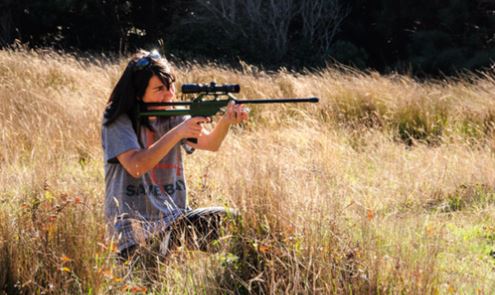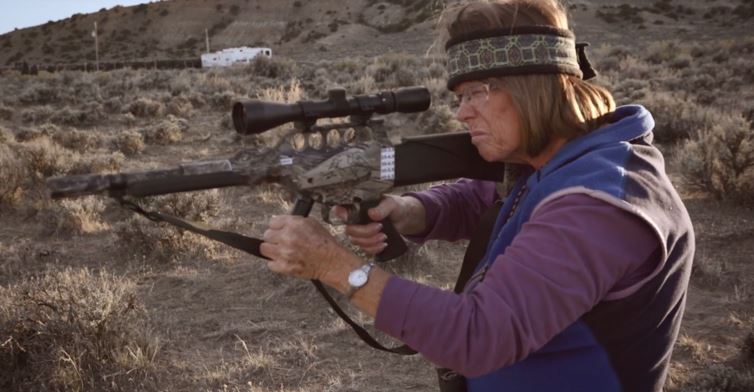The incident started on April 29 with 54 horses captured, none shipped, none released and no deaths.
RELATED: Red Rock Roundup Announced.
The incident started on April 29 with 54 horses captured, none shipped, none released and no deaths.
RELATED: Red Rock Roundup Announced.
A new colt is the third foal born in 2024 according to a report by OBX Today.
Why is this important?
The advocates have been poisoning the mares with PZP, a restricted-use pesticide that tricks the immune system into attacking their ovaries.
The size of the breeding population and the number of viable mares is not known.
Curiously, the story ends with a remark about protecting and preserving this critically endangered herd.

RELATED: Currituck Outer Banks to Become Like Assateague Island?
The privately owned facility experienced an 11% mortality rate in 2023 according to a report dated April 29 by KLAS News.
Information for the story was supplied by the Campaign Against America’s Wild Horses, a leader in nonmotorized removal.
The concluding remark about the dark realities of the BLM’s roundup and removal program does not arise from a genuine concern for wild horses.
Rather, it reflects their frustration in taking market share from the legacy contractors to expand their pesticide business.

As for the horses, better if they weren’t even born.
Alternative C, a fully contracepted herd that dies off, is no longer on the table but it could still become a reality. Here’s how.
The herd needs to be reduced from 200 to 60 or less according to the story by AP News.
Motorized removal will draw the same negative reaction as the original plan.
The advocates have had some success in convincing the public that attrition by pesticides is better than attrition by helicopters, and nobody talks about getting rid of wild horses more than they do, so let’s see what would happen if the Park Service turned to them for advice.

The initial population is 200 and the goal is 60.
Assume a six percent death rate and zero percent birth rate.
Let x = number of years to achieve goal by nonmotorized removal.

The advocates will need almost 20 years to achieve the goal.
Actually, they only need five years. The mares will be sterile after that and the herd will implode, just like Assateague Island.
The assumption of a constant death rate is probably not valid.
With no new foals hitting the ground, the average age of the herd will increase, along with the death rate, so the goal could be achieved sooner than expected.
RELATED: TRNP Decision Offers Mixed News to Wild Horse Advocates.
The incident started on April 16. Results through April 28:
The figures above are based on the daily reports.
The death rate is 2.6%.
The capture total includes 49 stallions, 51 mares and 15 foals.
Youngsters represented 13.0% of the animals gathered, consistent with a herd growth rate of eight percent per year.
Of the adults, 49.0% were male and 51.0% were female.
Body condition scores were not given.
The location of the trap site is not known.
The Complex is subject to permitted grazing.
There are no plans to treat any of the mares with fertility control pesticides and return them to the range.
The roundup supports three tenets of rangeland management.
RELATED: Caliente Roundup, Day 11.
On the Maryland side of Assateague Island with Canadian Glampers.
The herd continues to shrink eight years after the PZP darting program was shut off.
A new project has been created in ePlanning but the folder only contains maps.
The proposed plan includes forcible removal by helicopter, relocating some animals to other parts of the range to maintain herd genetic viability, selective return to maintain band integrity, and application of fertility control methods such as pesticides (which the advocates are already doing) and IUDs.
It would be effective for ten years.
The WHR covers 36,100 total acres northeast of Grand Junction, CO, including 35,178 public acres, and is not subject to permitted grazing. Surrounding lands are.
The 150 horses allowed by plan require 1,800 AUMs per year and the stocking rate allowed by plan is 4.3 wild horses per thousand public acres, four times higher than the target rate across all HMAs.
The current population is thought to be 211 according to the latest HA/HMA Report.
A roundup is on the latest schedule with a start date of September 11.
Advocates with the Salt River Wild Horse Darting Group, an affiliate of the Campaign Against America’s Wild Horses, are supposed to be getting rid of them.
This little guy probably has a weakened immune system as discussed on Friday.
If a predator doesn’t get him, disease will, which is great news for the advocates.
RELATED: Salt River Darting Program by the Numbers.
The incident started on April 16. Results through April 26:
The figures above are based on the daily reports.
The death rate is 2.6%.
The capture total includes 49 stallions, 51 mares and 15 foals.
Youngsters represented 13.0% of the animals gathered, consistent with a herd growth rate of eight percent per year.
Of the adults, 49.0% were male and 51.0% were female.
Body condition scores were not given.
The location of the trap site is not known.
The Complex is subject to permitted grazing.
There are no plans to treat any of the mares with fertility control pesticides and return them to the range.
The roundup supports three tenets of rangeland management.
RELATED: Caliente Roundup, Day 9.
Although there are no plans in place or a timeline for managing them, the agency says they’re outside their designated territory and they contribute to negative visitor impacts and unsafe interactions with wildlife.
That has the locals riled up and they’ve started a petition asking the Forest Service to establish an educational program to dissuade the public from feeding and petting them.
Those results will be presented to the Forest Service on May 30 according to a story by KTNV News of Las Vegas.
The Spring Mountains NRA, where the animals reside, is surrounded by BLM lands identified for wild horses and burros.
The event runs from 8 AM to 5 PM at the Nugget Casino Resort in Sparks, NV, according to yesterday’s announcement.
BLM staff will provide guidance on land status, locating and mapping new claims, and transfers of interest, among other things.
Personnel with the State of Nevada will be available to answer questions and will provide information on filing with counties.
The National Data Viewer has an option for mining claims in the layer list but you have to zoom in to enable it.
The following image shows claims and herd areas around Caliente, NV.
The Public Land Survey System, another option in the list, helps you identify their size and location.
The advocates would have you believe that drilling and mining are the greatest threat to wild horses, as they eradicate the herds with ovary-killing pesticides.
They are masters of misdirection and subterfuge.
One by one they’re coming out of the closet.
This time it’s In Defense of Animals, commenting on yesterday’s announcement that wild horses can stay in TRNP:
“PZP is the darting method that should be used for wild horse sterilization, not GonaCon.”
For years the advocates have been telling you it’s a safe, proven and reversible vaccine.
Now they admit it’s a sterilant.
They are enemies of the horses, leaders of the blind, irrelevant.
RELATED: Mass Sterilization OK if Done with PZP.
That’s according to a story published by The Daily Telegraph for its subscribers but available on MSN without restrictions.
We want to be equal with men → We don’t need men → We are men
Real men don’t want to be around them.
Where do you find these wretches in the wild horse world?
Can you think of anyone better qualified to destroy families and disrupt the natural order than women who have been brainwashed out of marriage and distaff pursuits?
The incident concluded on April 20 with 401 burros captured, 397 shipped, none released and four dead according to figures on the sidebar.
The capture and removal goals were 400 each.
A freeze-marked horse was also caught and returned to its owner.
Data quality was poor.
The capture total included 178 Jacks, 186 jennies and 37 foals.
The daily reports indicated 161 jacks, 181 jennies and 37 foals, for a total of 379, with more animals processed than captured.
The death rate was 1% according to figures in the sidebar.
Foals represented 9.2% of the animals gathered.
Of the adults, 48.9% were male and 51.1% were female.
There were no plans to treat any of the jennies with fertility control pesticides and return them to the range.
The roundup supported three tenets of rangeland management.
From time to time, you hear about the birth of a foal in an area where the advocates are working vigorously to snuff out new life.

They usually rely on predators to take out any youngsters that slip through their darting programs but those who survive may have faulty immune systems.
PZP tricks the immune system into attacking the ovaries.
The pesticide works best (sterilizes faster) on mares with strong immune systems.
They don’t bear fruit, while the immuno-compromised females keep producing foals who inherit that trait.
A herd being treated with PZP undergoes selective breeding for weak immunity, which puts the population—what’s left of it—at risk for disease and ultimately, extinction.
RELATED: Foal-Free Friday, Advocates, Assateague and Amnesia Edition.
The online meeting runs from 3 PM to 5 PM Mountain Time and will be livestreamed according to today’s announcement.
You must register to submit comments during the hearing.

There are no requirements for hearings on nonmotorized removal, a growing problem in the wild horse world.
The bad news is that Alternative C, a fully contracepted herd that dies off, is not going to happen.
For now, they’ll have to be content with their sterilization programs at the Salt River, Virginia Range and elsewhere.
The good news is that the herd still needs to be whittled down to an appropriate level, and that could be accomplished with ovary-killing pesticides instead of helicopters.

The horses will stay according to a story dated April 25 by AP News.
NPS said all materials will remain on the project website.
RELATED: Senate Orders Park Service to Keep Wild Horses at TRNP?
The incident started on April 16. Results through April 24:
The figures above are based on the daily reports.
The death rate is 2.9%.
The capture total includes 41 stallions, 48 mares and 14 foals.
Youngsters represented 13.6% of the animals gathered, consistent with a herd growth rate of eight percent per year.
Of the adults, 46.1% were male and 53.9% were female.
Body condition scores were not given.
The location of the trap site is not known.
The Complex is subject to permitted grazing.
There are no plans to treat any of the mares with fertility control pesticides and return them to the range.
The roundup supports three tenets of rangeland management.
RELATED: Caliente Roundup, Day 7.
Public lands in the western U.S. managed by the BLM currently support livestock equivalent to one million wild horses on 145 million acres, as determined previously.
If you scale that down to 42 million acres, public lands identified for wild horses and burros in 1971, you get 290,000 wild horses.
The current population is 59,000 wild horses and 15,000 wild burros, equivalent to 66,500 wild horses, well below the carrying capacity of their land.
The population target is 27,000, the number of animals allowed by plan.
The advocates are doing everything they can to help the bureaucrats and ranchers achieve this goal.
